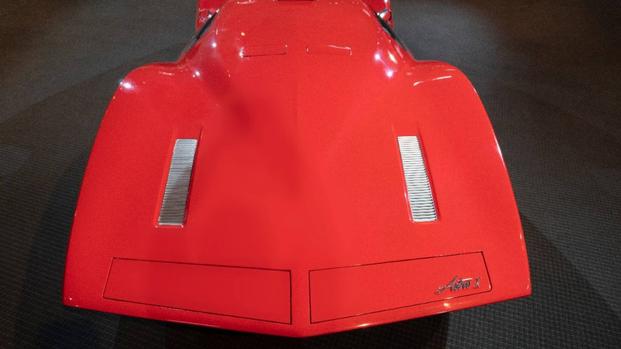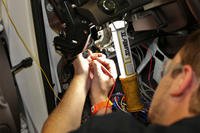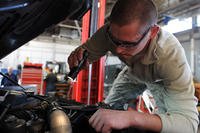Jump Links
General Motors reached a high point in the corporation's history in the mid-1960s. Its divisions were building segment-topping products, such as the Pontiac GTO and Buick Riviera. The brands were also experimenting with new tech, including the turbocharged Oldsmobile Jetfire and front-wheel-drive Oldsmobile Toronado. Plus, the C2 Corvette gave Chevy a sports car capable of competing against (and even beating) European performance models.
Meanwhile, GM's team of designers was putting out some of the most intriguing concepts ever. For example, Pontiac had its idea for the Banshee sports coupe, and the series of Firebird show cars looked more like airplanes than cars. The 1962 Mako Shark imagined a Corvette with sharper lines, inspired by the carnivorous fish.

Chevrolet
The Chevrolet Astro I concept also comes from this fantastic era for GM's brands. It debuted at the 1967 New York Auto Show as a brash idea for a sports car. The vehicle was a mere 35 inches tall, making it five inches shorter than the famously low Ford GT40, with its 40-inch total height. Beyond the wild proportions, a cutting-edge engine was located behind the passenger compartment, offering impressive power for the time. Let's take a closer look at this obscure piece of Chevy history.
A Closer Look At The Astro I

Chevrolet
The Astro I looks shocking today. It was even odder to the eyes of folks at the New York Auto Show in 1967. For one thing, the concept lacked doors. Instead, the rear panel hinged open, and the seats tilted with it (see below). With the panel closed, the only rearward view came from the roof-mounted periscope. In front, there were pop-up headlights, and the taillights were hidden in an integrated panel at the back.
Inside, the Astro I has a two-handle yoke rather than a steering wheel. The circular gauges came straight out of contemporary Chevy models. The HVAC, windshield wiper, and controls for the power-adjustable pedals and yoke were on a panel to the driver's left.

Chevrolet
The powerplant is a heavily modified version of the air-cooled, flat-six from the Corvair, with increased displacement to 2.9 liters from the original 2.7 liters. The upgrades also reportedly included hemispherical combustion chambers, steel cylinder sleeves, experimental three-barrel carburetors, and a revised camshaft. The setup made 240 horsepower, a significant upgrade over the 180 hp from the production Corvair's most powerful model.
Over time, the Astro I seemingly received some tweaks. Period photos from Hot Rod magazine show it with a total of six carbs –three on each side. However, the images from the GM Heritage Center reveal a four-carb setup – two on each side. The setup apparently changed at some point, but the timing and reason for this revision is unclear.
How Did The Astro I Happen?

Chevrolet
In 2012, the site Dean's Garage had the opportunity to interview Roy Lonberger, who was the primary designer of the Astro I. He offered a fascinating behind-the-scenes look at the vehicle's creation. The team behind the concept also included GM design lead Bill Mitchell and Larry Shinoda, who primarily worked at Chevy during his time with the General, including penning the 1963 Corvette Sting Ray.
The Astro I's genesis happened during a snowstorm between Christmas and New Year. The conditions were so bad that some designers, including Lonberger, were unable to leave the design studio.
"I stayed until the storm passed. During that time, I decided that I wanted to create an extremely low aerodynamic race car – one that I could put up on the wall and hopefully use as stimulation for the upcoming mid-engine Corvette program that would be happening after the holidays," he said.
After New Year's, Mitchell returned to the design studios and saw Lonberger's sketches for the low-slung sports car. "He stopped, looked, paused, said a few profanities, and then demanded who had done the sketches. In the back, I meekly raised my hand, whereupon he ordered me to grab my stuff and come with him immediately. I did not know what to think, but the thought of being fired crossed my mind," Lonberger said.

Chevrolet
Mitchell actually took him to the secret Warehouse Studio, which was not on the automaker's famous Tech Center campus. This was the site where Mitchell worked on racing projects because GM had banned factory-backed motorsports participation. He skirted the corporate mandate by setting up this separate area away from the company's other work.
Read the full article on CarBuzz
This article originally appeared on CarBuzz and is republished here with permission.










